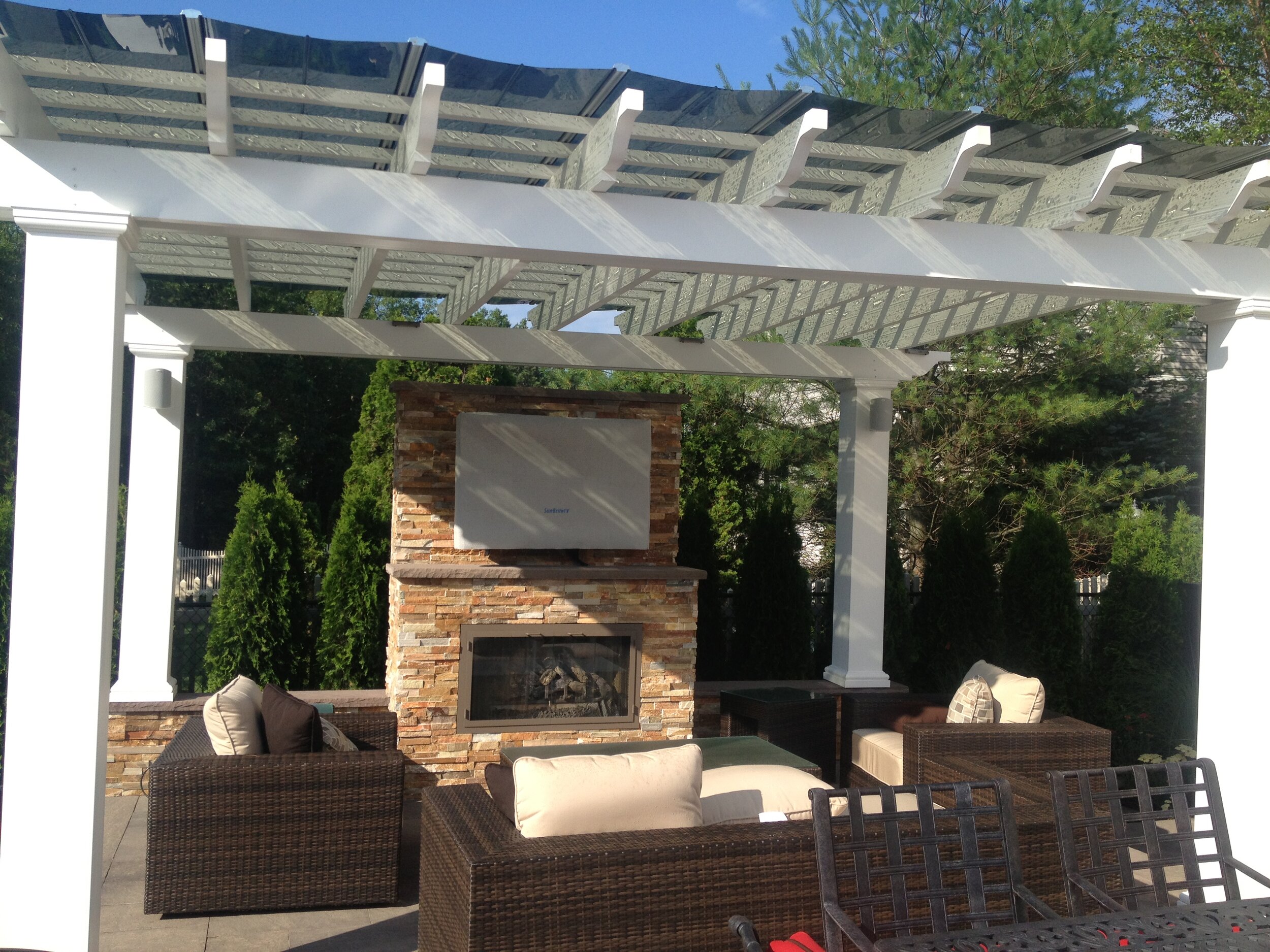A new outdoor fireplace becomes a gathering spot, acting as the warm heart of outdoor living on chilly nights. But is it better to go with a wood-burning or gas outdoor fireplace for your Dix Hills, NY, backyard? Let’s take a look at the pros and cons of each type of outdoor fireplace.
Wood
The timeless appeal of a wood-burning outdoor fireplace is undeniable. The crackling of the fire, the aroma of woodsmoke, the fun of building and maintaining a fire, and the ability to use the fireplace for cooking all contribute to a cozy ambience.
A wood-burning fireplace is typically less expensive than gas because it doesn’t require gas connections and a constant supply of gas. However, ambience comes at the cost of convenience. Wood must be sourced, cut, split, transported, and stacked; the fire must be started (challenging on windy days); ashes must be disposed off; and chimney flues must be cleaned annually to prevent creosote buildup that can lead to chimney fires. All aspects of a wood fire make it a messy job although outdoor purists say that’s part of the charm.
Related: 7 Ways You Can Use Your Outdoor Fireplace Year Round in Babylon, NY
Safety is the final consideration regarding wood-fueled fireplaces. Wood fire burns very hot and must be monitored at all times, as it cannot be adjusted or put out quickly. For wood fires, you will also need a spark arrestor and fire screen to prevent sparks and embers from flying out.
For cooking, it’s recommended to use only fruitwoods like cherry and avoid pine, which can leave a bitter taste on food.
Gas
Propane or natural gas fireplaces are becoming more popular choices for outdoor fire features. While gas fireplaces are considered more expensive to install and operate, there are several key advantages over wood.
Gas burns cleaner than wood. This is a plus for environmentally conscious homeowners as well as those who don’t want to inhale woodsmoke. Gas offers more decorating opportunities, too: just add colored glass or lava rock for a unique fireside experience.
Gas fireplaces don’t generate nearly as much heat as wood, but flames can be adjusted or extinguished instantly for comfort and safety.
Related: How an Outdoor Fireplace can Transform Your Old Outdoor Kitchen in the Westbury, NY, Area
Natural gas connects to the home’s gas supply, which can be costly. Propane-fueled gas fireplaces have to factor in a place to store the tank, usually a closed cabinet. Depending on how often you use the outdoor fireplace, the propane tank may need replacing several times a season.
Regarding safety, there is always a chance for a gas leak that can ignite, so proper installation is essential.
Cooking on a natural gas fireplace is generally not recommended because grease and food debris can clog the nozzles and create unsightly buildup on the decorative stone, which will be virtually impossible to clean.
The Best Outdoor Fireplace Option for You
The best choice ultimately comes down to whether you prioritize the convenience of gas or the ambience of wood. The work involved with wood may be offset by ambience and the ability to cook food over an open flame. The initial and ongoing cost of gas may be offset by the convenience, cleanliness, and easy on-off capabilities.
Give the pros at Gary Duff Designs a call when it’s time to enhance your outdoor living space with an outdoor fireplace. We’ll help you make the decision to go with wood or gas, and install a beautiful fireplace that will become the focal point of your patio.


